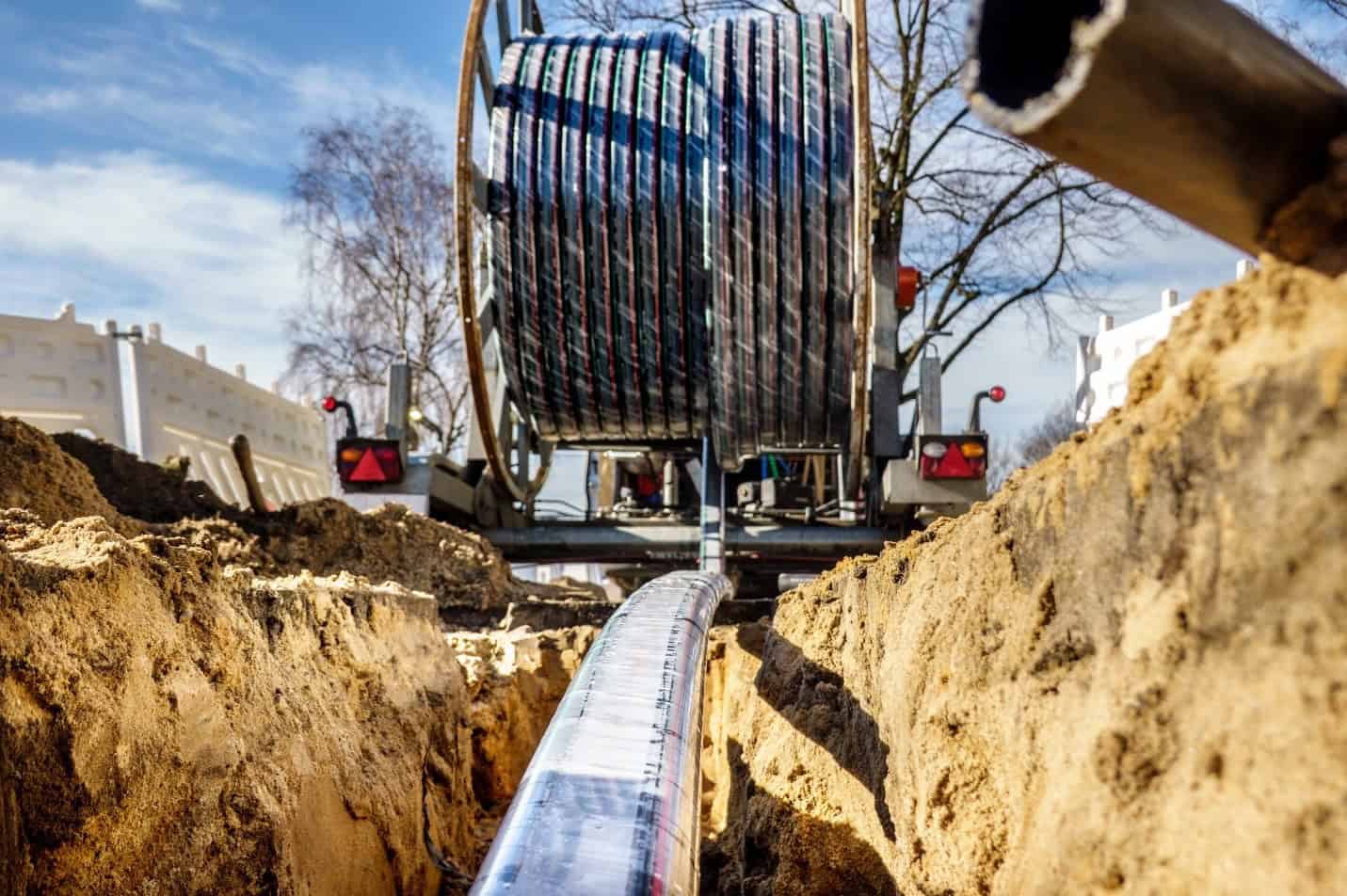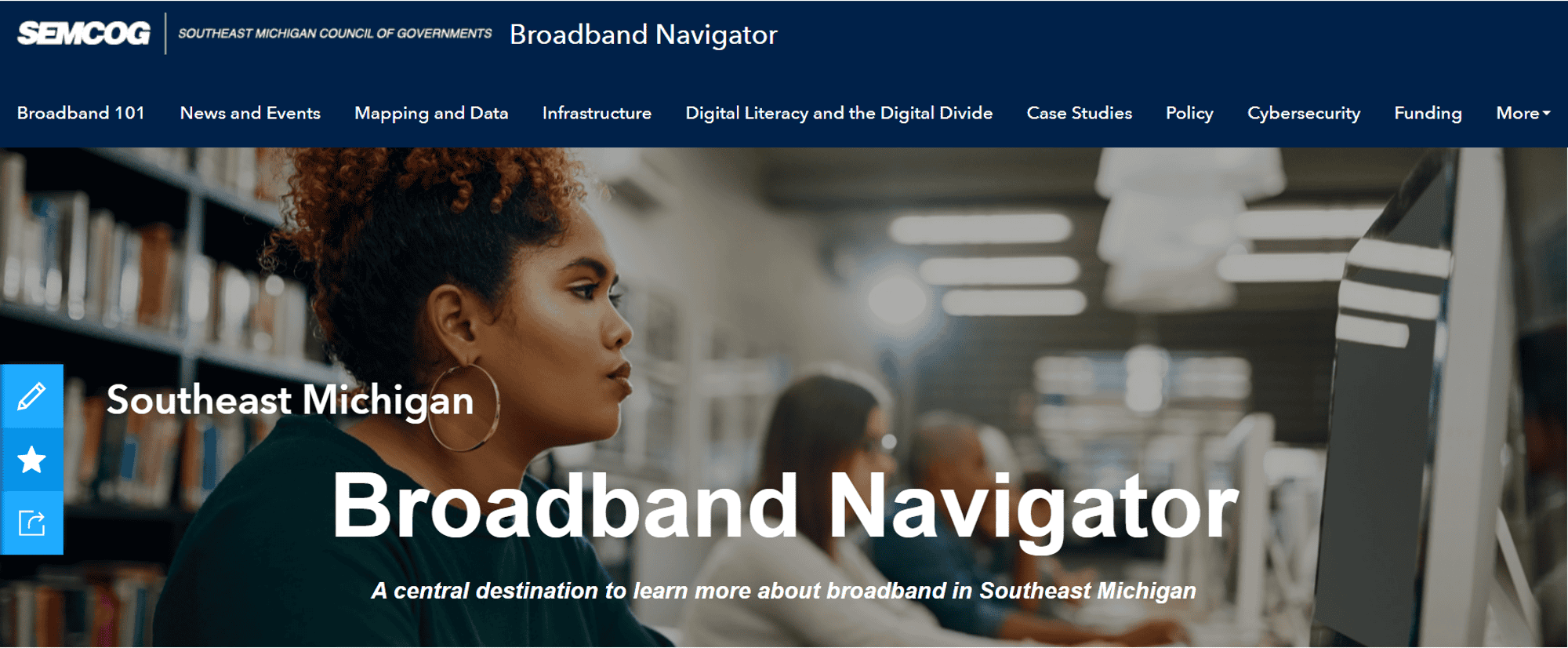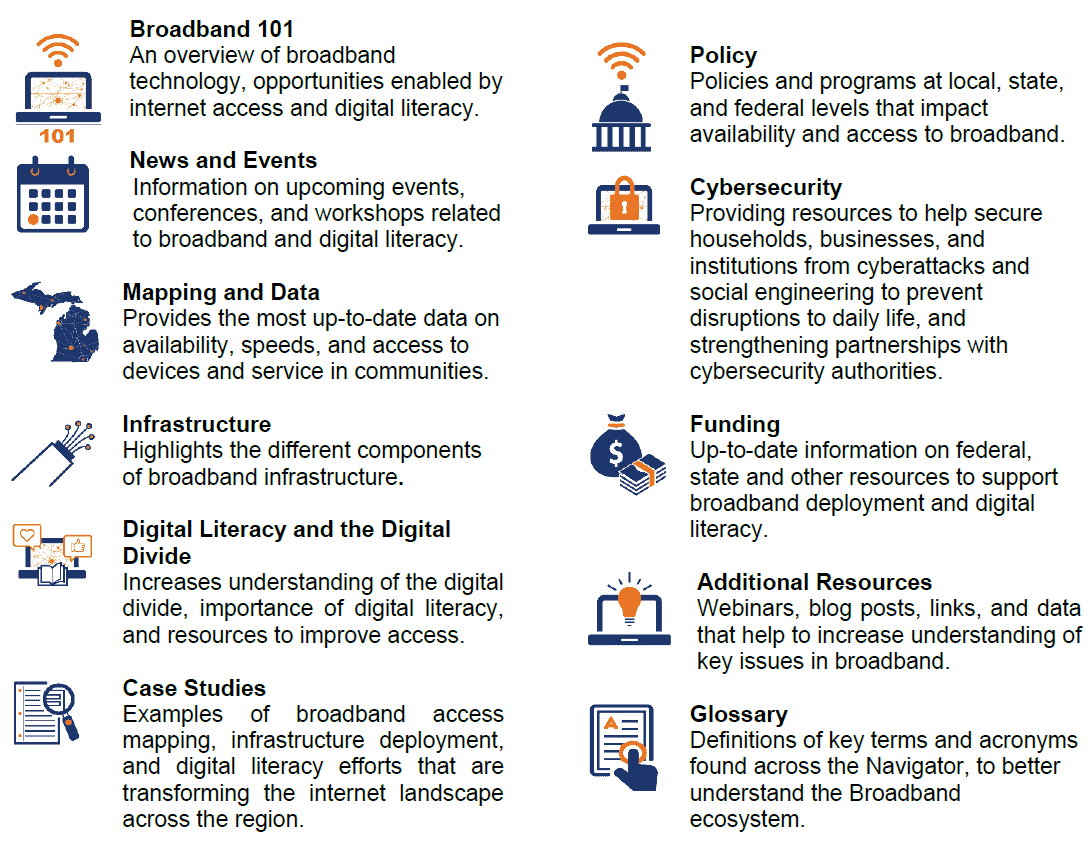In efforts to implement the regional Broadband Framework, Broadband in Southeast Michigan: Expansion, Engagement, and Equity, SEMCOG developed the Southeast Michigan Broadband Navigator to serve as a destination on all things broadband. The Broadband Navigator aims to be a dynamic resource for all those involved with and affected by broadband internet access.
The launch of the Broadband Navigator earlier this year responds to a growing focus on the importance of internet access and digital literacy. This access includes both:
- A physical connection to the internet, and
- Comprehensive and equitable access to the Internet.
Physical connection refers to infrastructure such as internet lines and wireless stations, while equitable access is facilitated through increased access to and knowledge of effectively using internet-accessible devices like computers and smartphones. Expanding this access is not only a key priority for achieving equity within Southeast Michigan, but also reflects that internet access is a growing statewide and national need for economic, educational, and social prosperity.
Improving Access to Broadband Internet
Access to high-speed internet is no longer just a “nice-to-have.” As we become more connected online, we need higher speeds to keep up with the amount of transmitted and received information. We download and upload gigabytes-sometimes even terabytes-of data per month.
Slow internet speeds can hamper activities such as video meetings and telehealth appointments, uploading school or work assignments, watching television, and/or shopping online, if not impossible. Not only that, many people do not have access to the internet at all. The need for connectivity was clear through the COVID-19 Pandemic, which has reinforced that internet availability for all is a critical, equity-driven socioeconomic priority.
The resources available on the Broadband Navigator reflect the fact that broadband access and digital equity are a complex set of challenges with no one-size-fits-all solution. The Broadband Navigator offers more information on how to address:
- Gaps and opportunities in infrastructure networks;
- Getting more people connected to the internet for daily activities, and
- How industry, government, and nonprofits can help connect their communities and institutions.
The site offers a number of pages, resources, and organizational contacts to help take on these challenges.
- Learning the basics of broadband, internet technology, and the infrastructure networks that trade packets of data is an essential-jumping off point that can be approached through the Navigator’s Broadband 101 page.
- News and Events indicate how the space is changing at local, regional, state, and national levels. These resources can help provide a ground truth to what “broadband” means within your community or enterprise, and how different events or news of changes regarding internet access may impact you.
- The Mapping and Data page provides different maps and data tools available from SEMCOG and the FCC, including the new National Broadband Map and information on how to improve its accuracy. These data and resources also bring up important questions on what types of technologies make broadband internet speeds possible.
- The Navigator’s Infrastructure page goes into detail to help differentiate the different types of infrastructure networks and technologies that make connecting to the Internet possible.
Access to the internet is only as good as the extent to which we can maximize people’s ability to use it. “Digital Literacy” is defined by the National Telecommunications and Information Administration (NTIA) as “[the measure of] an individual’s ability to use the Internet and modern technologies, such as computers and smartphones.” Even as we become accustomed to these technologies in our daily lives, using these devices and the internet can still be a difficult and daunting task. This especially applies when considering concerns such as cybersecurity or managing sensitive information, like online banking and telehealth.
- The Broadband Navigator aims to help bridge this gap through the information contained on the Digital Literacy and the Digital Divide page. This presents information on both concepts, as well as resources available through government and nonprofit entities that help make access a realistic and affordable prospect.
Digital literacy is the ability to confidently navigate an increasingly connected environment and a stepping-stone to achieving digital equity. Regardless of skill level, it is critical for everyone to have a base understanding of how the internet and internet-enabled devices work so they have access to the opportunities available online. Having a level playing field also allows everyone to become savvy, careful, and secure to avoid the activities of malicious cyber actors, phishing schemes, and unsafe websites.
- Cybersecurity is a key role in digital equity by making sure that every person and organization has the necessary skills and tools to avoid being the victim of a cyberattack. The Broadband Navigator includes this information on the Cybersecurity page, which also includes information on different agencies and organizations that help prevent and mitigate the effects of these attacks.
The Navigator also allows you to easily access information on the Policy and Funding mechanisms that help make broadband and digital literacy projects possible, alongside Case Studies on different organizations, agencies, and government entities that have successfully implemented broadband and digital equity initiatives throughout the Region. These pages will also help with forthcoming funding opportunities and policies that will be made available through the Broadband Equity, Access, and Deployment (BEAD), when Michigan’s allocation of the $42.45 billion program is announced later this summer.

Who is the Navigator for?
Everyone has different priorities in understanding the broadband space, and the Navigator is set up to be approached from any angle.
- A policymaker or planner may find more use of the Policy and Infrastructure sections, while digital equity advocates may find the most benefit in the Digital Literacy and the Digital Divide section.
- While the Navigator provides new information for individuals who are already familiar with broad concepts and/or terminology, the Broadband 101 provides an overview of broadband to establish a common understanding.
- The Glossary contains key terms and acronyms that help with navigating the rest of the website.
The Additional Resources page also provides other SEMCOG resources such as SEMCOG University webinars and blog posts that go in further depth on these topics.

In short, the Navigator-just like broadband itself-is for everyone. An equitably connected society is one that considers as many different users as possible. SEMCOG invites any feedback or questions to make this resource more clear and effective for Southeast Michigan and beyond.



Leave a Reply